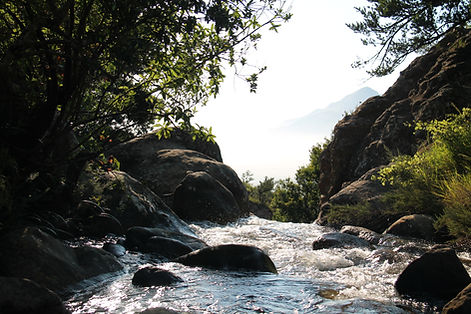Java moss (Taxiphyllum barieri) is a great plant to include in low-light aquariums holding small tropical freshwater fish. It is one of the easier plants to grow, tolerates a wide range of temperatures, and will happily grow in just about any substrate or attach itself to any surface. Almost impossible to harm, Java moss is a favorite of many popular freshwater tropical aquarists.
Overview
Java moss is known by a number of common names, including Christmas moss, dubious bladder moss, mini moss, Singapore moss, triangular moss, and willow moss.
- Scientific name:Taxiphyllum barbieri
- Synonym:Vesicularia dubyana
- Origin: South-east Asia
- Height: Up to 4 inches (10 cm)
- Width: Up to 4 inches (10 cm)
- Growth Rate: Slow to Medium
- Placement: Mid and foreground
- Lighting Needs: Low
- Temperature: 59-82 Fahrenheit (15-28 Celsius)
- pH: 5.5-8.0
- Hardness: 6-20 dGH
- Difficulty: Easy
Origin and Distribution
Java moss originates from Southeast Asia, including Indonesia, Japan, Java, Malaysia, Philippines, Singapore, Vietnam, and the islands of the East Indian archipelago. It is very common in moist tropical climates, often seen growing vigorously on rocks, tree trunks, and river banks. It is the most common of the mosses used in aquariums and is sold widely throughout the world in the aquarium trade, both in shops and online.
Originally identified as Vesicularia dubyana, Java moss has recently has been reclassified as Taxiphyllum barbieri. Many references still use the original classification and debate continues over the accuracy of the name change. Some assert that Vesicularia dubyana is a different species, known by the common name of Singapore moss. However, that view is also highly debated and many believe that these plants are, in fact, the same moss.
Description
A delicate moss, Java moss has small irregularly branched stems that are populated with rows of tiny overlapping oval-shaped leaves. The elongated bright green leaves of the submerged forms of Java moss are much smaller than those that grow on land. Like other mosses, Java moss has no true roots; instead, it absorbs nutrients primarily through its leaves. It will grow free-floating or will send out rhizoids to attach itself to rocks, decorations, and driftwood, as well as to gravel or sand.
Placement and Uses
Java moss is very popular as a foreground cover for sandy or rocky substrates, but it will grow on virtually any surface. Stunning carpets of Java moss are easily created by attaching it to a plastic mesh, which can be placed directly on the substrate or against the side of the aquarium to create a living wall.
To create a mat of Java moss using plastic mesh, place the moss between two pieces of mesh and tie them together with thread or fishing line. Over time, the moss will grow through the holes to create a dense mat that can then be used in a number of ways. Creative aquarists have formed mesh cones, balls, and other shapes on which to grow Java moss. Another use for Java moss attached to mesh is to cover unattractive aquarium equipment.
A mat of Java moss is also a great option for egg-scattering fish. The eggs fall into the moss and are protected from adult scavengers. Java moss makes a great cover for tiny fry and juvenile fish. Mature Java moss also supports the growth of Infusoria—an ideal first food for newly hatched fry.
Java moss can also be used as a floating plant to provide a spawning site for mop-spawning fish. Fish that build bubble nests, such as bettas and gouramis, also enjoy clumps of floating Java moss. Allow some floating moss in additions to clumps on the substrate to provide lots of hiding places for fish.
Care
Maintaining good water quality is the best way you can provide for your Java moss, but periodic feedings with liquid fertilizer will promote new growth and keep your moss healthy. Java moss on the bottom of the tank is prone to collecting debris, which can be unsightly and even damaging to the plant if large amounts build up. To clean this moss, remove it from the tank and rinse it well in water far away from spawning times. Don't worry about being too rough with the plant, as Java moss is quite sturdy.
Perhaps the only common problem encountered with Java moss is algae growth. Once algae begin growing in the moss, it is almost impossible to remove, and the entire plant should be discarded. The best way to prevent algae growth is to avoid excessive light and keep the water clean. Elevated nitrates and phosphates, which tend to creep up when water changes aren't performed regularly, are what encourage algae growth.
Growth and Propagation
Java moss is a slow-to-medium grower and is propagated by division. To start new plants, simply divide pieces off the main plant and place them in another location. The division will attach itself to any surface by the use of root-like rhizoids. However, these rhizoids do not absorb nutrients like roots; the only purpose they serve is to attach the plant to an object. All nutrition is absorbed through the stems and leaves.
Generally, Java moss grows rather slowly. Warmer water temperatures tend to slow the growth of this moss. As it grows, the plant spreads both horizontally and vertically, often forming dense tufts of heavy growth. It should be trimmed to maintain a good shape and to promote further growth. Pieces that are trimmed can be used to start new plants.
source : The Spruce Pets
Java Moss (pouch)
No return and replacement coverage on live plants




